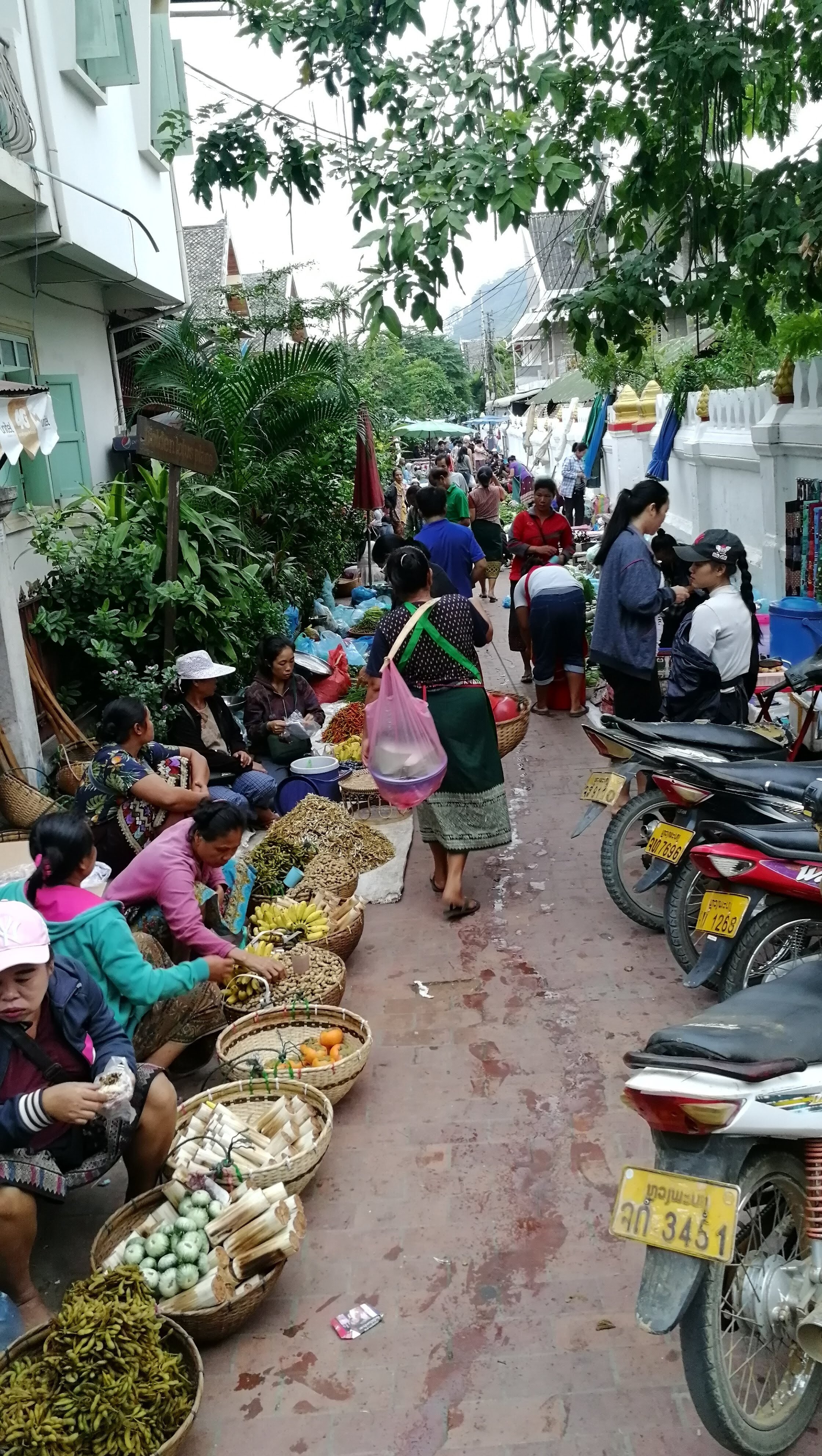
Blog
Guest Blog - Peter Wiechers
“In Vietnam they plant the rice, in Cambodia they tend to the rice, but in Laos they listen to the rice grow.”
Peter “driving” a tuk tuk.
This quote is attributed to the French colonists of Indochina, and at the time probably wasn’t too complementary. Nonetheless, after independence there still remains a noticeable French influence in the country as well as increasing numbers of recent ex-pats. The once slightly condescending “but in Lao they listen to the rice grow” remains, but it’s meaning - by a modern day, a bit more enlightened developed world - probably serves as more of a reflection of Buddhism in Laos: heightened awareness, and the ability to be in the here and now.
Peter teaching a team class.
I arrived in Luang Prabang on Halloween (October 31st) of 2016. At the time, the Buffalo Dairy was just getting started. As I remember, the site for its existence had recently changed and there was yet to be any permanent buildings. I had been graciously accepted by Susie and Rachel to work as a volunteer at their guesthouse which was located on the left bank of the Nam Kham River just a few kilometers - a good walking distance - not just from the Old Quarter, but to many other not so heavily visited parts of Luang Prabang as well.
More so than I envisioned, work at the guesthouse suited me extremely well. For the most part, I was the only native English speaker there, partnered with a Lao/Khmu/Hmong staff of 4-7 others. My duties included, but were not limited to: cooking and serving breakfast, taking reservations and checking guests in and out, and assisting when needed with housekeeping. By far and away the best part of all was working with the local staff. From the beginning I was amazed with how much patience they had with me. When I would make mistakes I would be corrected with a smile and a “bor bpen yang” (it doesn’t matter). A lot of my complaints about the U.S. (and a big chunk of the rest of the world) - the sometimes gruff mannered I-don’t-have-time-to-be-pleasant-with-you, just doesn’t seem to happen much in Laos.
Just before leaving LPB, Peter went and had lunch with Twee -right - (our maiban from the guesthouse) and her family.
Susie was often around the guesthouse (her office was upstairs) but she was inundated - I should say, beyond well inundated - with what seemed to me to be the completely crazy task of setting up the first of its kind Buffalo Dairy in this third world country! At the time I had a private joke running in my head that went something like this: God had specifically put Susie on earth in case his plans for the Second Coming, or Armageddon, or whatever you want to call it were to go awry, he would then at least be assured of having some on-the-ground reliable backup. I’m glad that hasn’t come to pass...yet.
In February of 2017, Susie, Rachel, and Steven felt that they were well on their way to putting a full time effort into the dairy, so they passed proprietorship of the guesthouse back to the original owner. By this time I was living at Rachel’s house with her family and commuting by tuk-tuk to the farm. My new task there was completely different from my work at the guesthouse. I was now setting up an English class for approximately 8-12 dairy employees. This work I found to be a bit more challenging (the students were not all at the same level) than that of what I was doing at the guesthouse. I also found that the Lao students, with their ever present politeness, were less inclined than their guesthouse counterparts to give me feedback on what was and wasn’t working for them. Even though having 20 years experience teaching high school history and science in California, I found that serving in a somewhat equal role at the guesthouse suited me better than that of being an “expert” (of which I wasn’t) at the new school. Nonetheless, I feel that I did a more than adequate job in setting things up. When it came time for me to return home I was able to have a full week with my replacement volunteer, Alfredo. It was satisfying to see that he was in tune with the program I had set up, and was already incorporating some of his own ideas to make improvements.
All in all, I’m really happy with the experiences I had at the guesthouse and on the farm. It’s great to see online just how far Susie, Rachel, and Steven have progressed in these four past years. Perhaps someday I will return for a second go around!
Peter’s last day at English classes, handing over to Alfredo.
HAVE YOU SEEN OUR SOCIAL MEDIA THIS WEEK?
If not, pop on over to facebook/laosbuffalodairy or instagram/laosbuffalodairy to see what we have been up to!
The Laos Buffalo Dairy Story: Part 2 - Building Laos’ first dairy - the first Buffalo arrive
Part 2 Building Laos’ first dairy - the first Buffalo arrive
Three days before our six-week trial was due to end, we managed to bring in a single cow milking machine from China. This machine ran on either electricity or petrol, which is important to note, as Mr. Eh didn’t have electricity near the field at the time. The machine arrived flat packed in the early evening, and Steven and Mr. Thon, our trusty tuk tuk driver, boldly took on the chore of trying to set it up in the failing light. With the instructions translated from Chinese, loosely into English, this was no easy task. Luckily, the instructions also kind of looked like IKEA instructions with lots of pictures to guide them.
This week’s blog post is a continuation of chef Rachel sharing our story as we tell it on the farm tour. For part 1 click here.
Part 2 Building Laos’ first dairy - the first Buffalo arrive
Three days before our six-week trial was due to end, we managed to bring in a single cow milking machine from China. This machine ran on either electricity or petrol, which is important to note, as Mr. Eh didn’t have electricity near the field at the time. The machine arrived flat packed in the early evening, and Steven and Mr. Thon, our trusty tuk tuk driver, boldly took on the chore of trying to set it up in the failing light. With the instructions translated from Chinese, loosely into English, this was no easy task. Luckily, the instructions also kind of looked like IKEA instructions with lots of pictures to guide them.
The following day we were very excited to try the machine to see if we could get more milk than from milking by hand. It felt like the entire village came out to watch! They had been watching over the previous six weeks all the new and unfamiliar things that we, as the crazy falang (the term for all ‘foreigners’) had come up with. As luck would have it, not a drop of milk came out. It turned out that buffalo are very sensitive to change. The machine was noisy and it made them nervous. So, we vowed to try again the next day. Finally, with two days left, we got some milk from the machine milking approach.
Our trial finished just in time for Steven and Susie to go back to Oz for a holiday. And when they came back, it was time to sit down and discuss our next steps. We decided to move ahead with the dairy, and that meant we put the idea of building a hotel on hold!
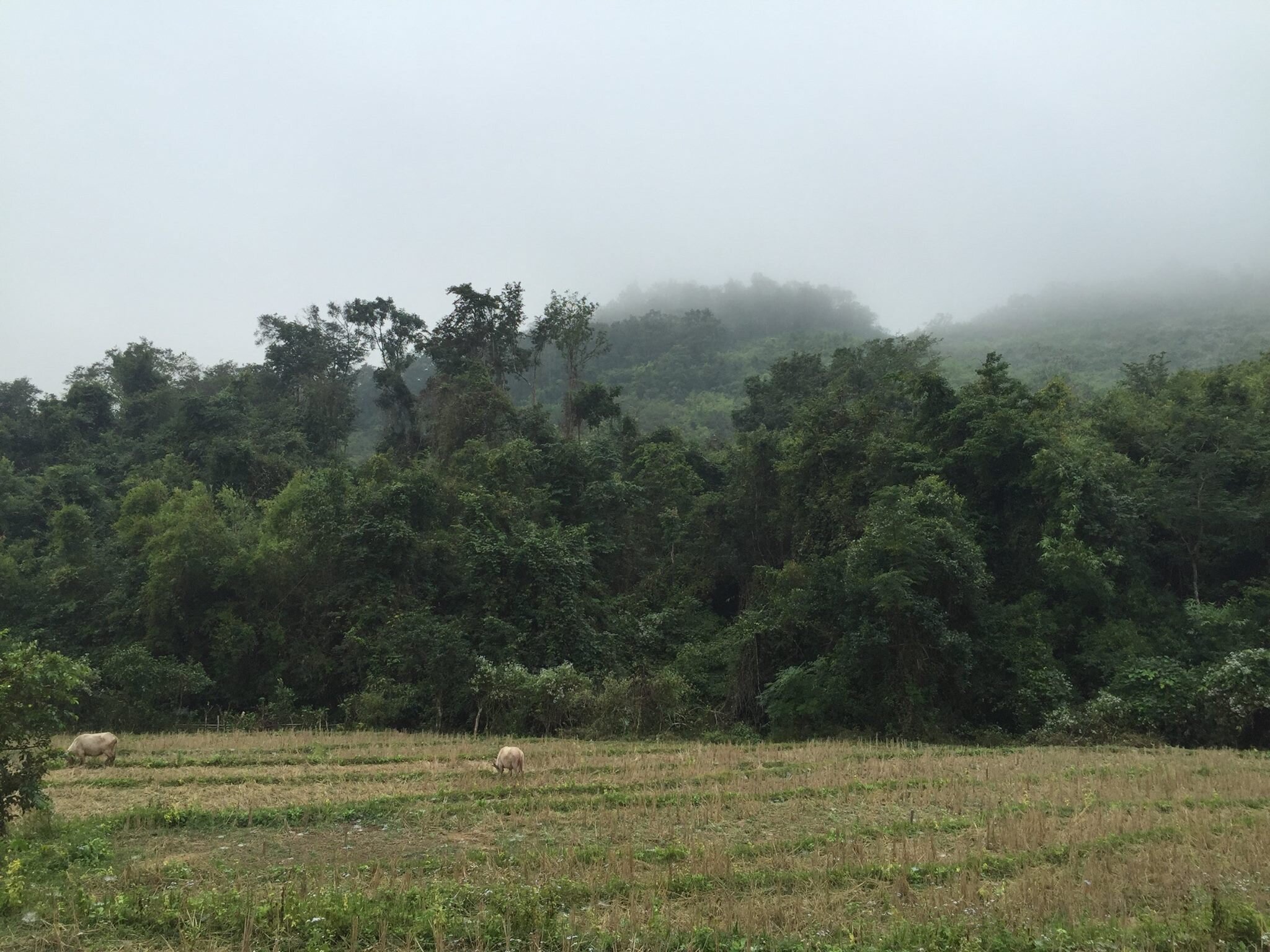
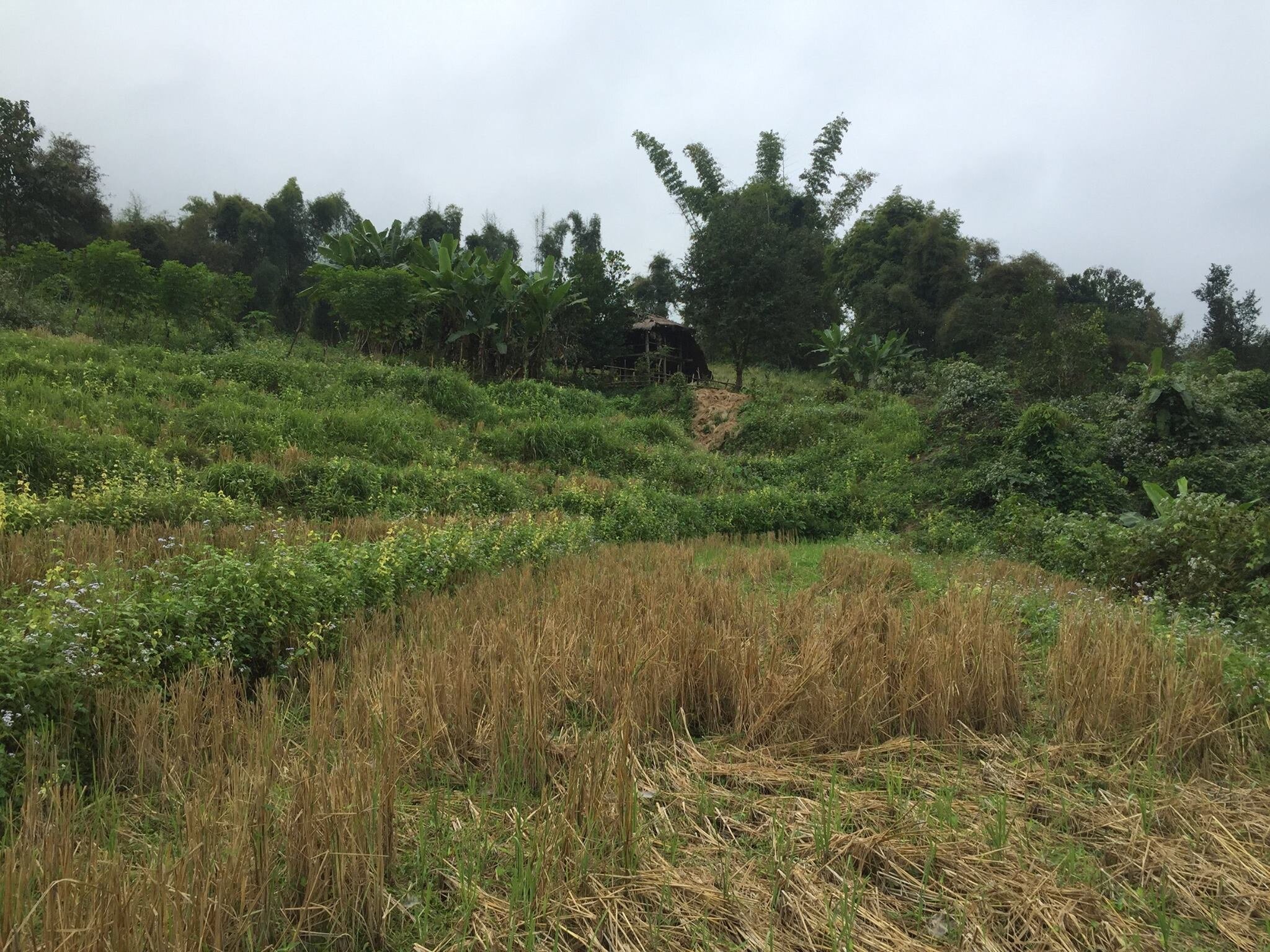
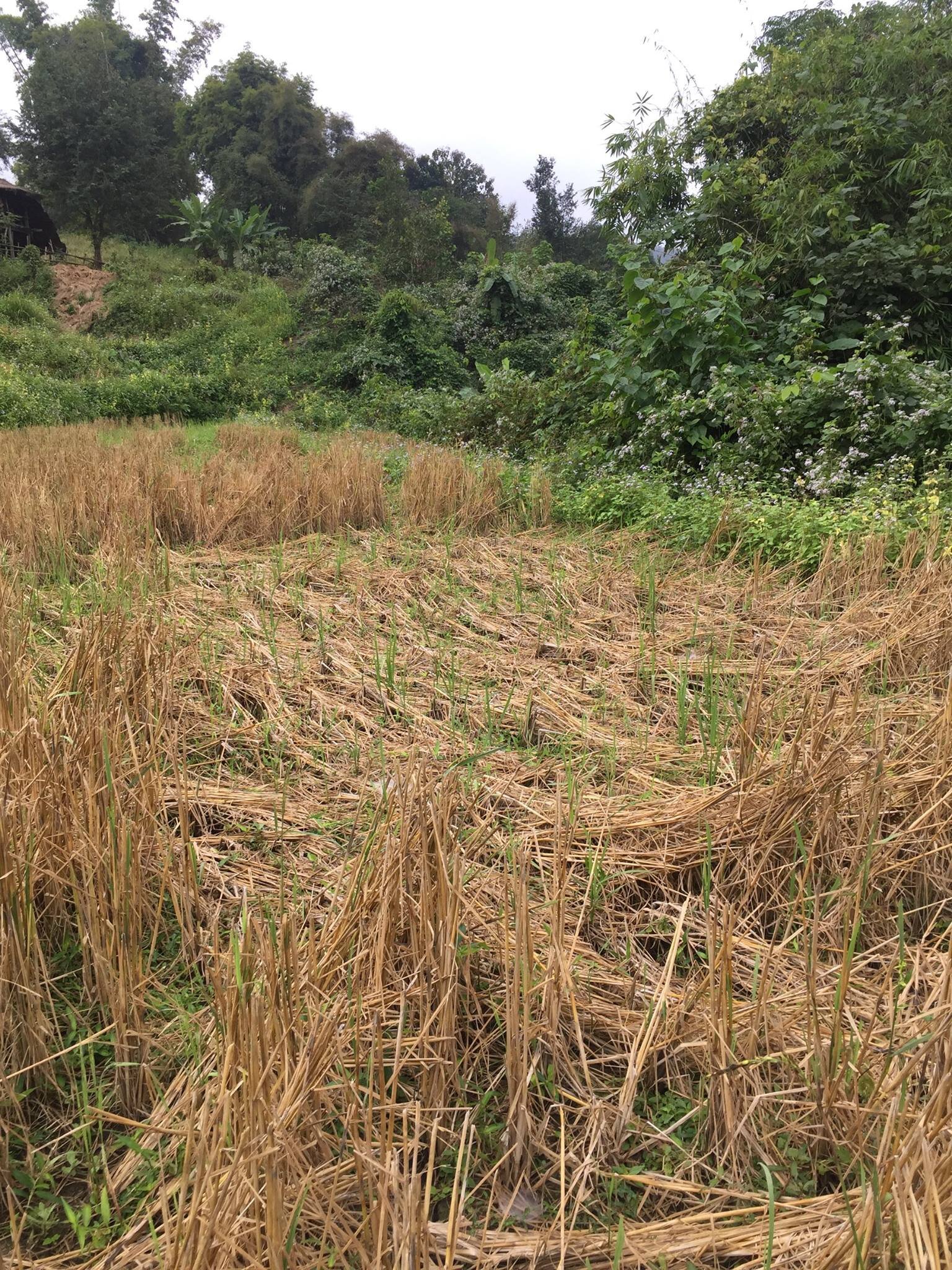
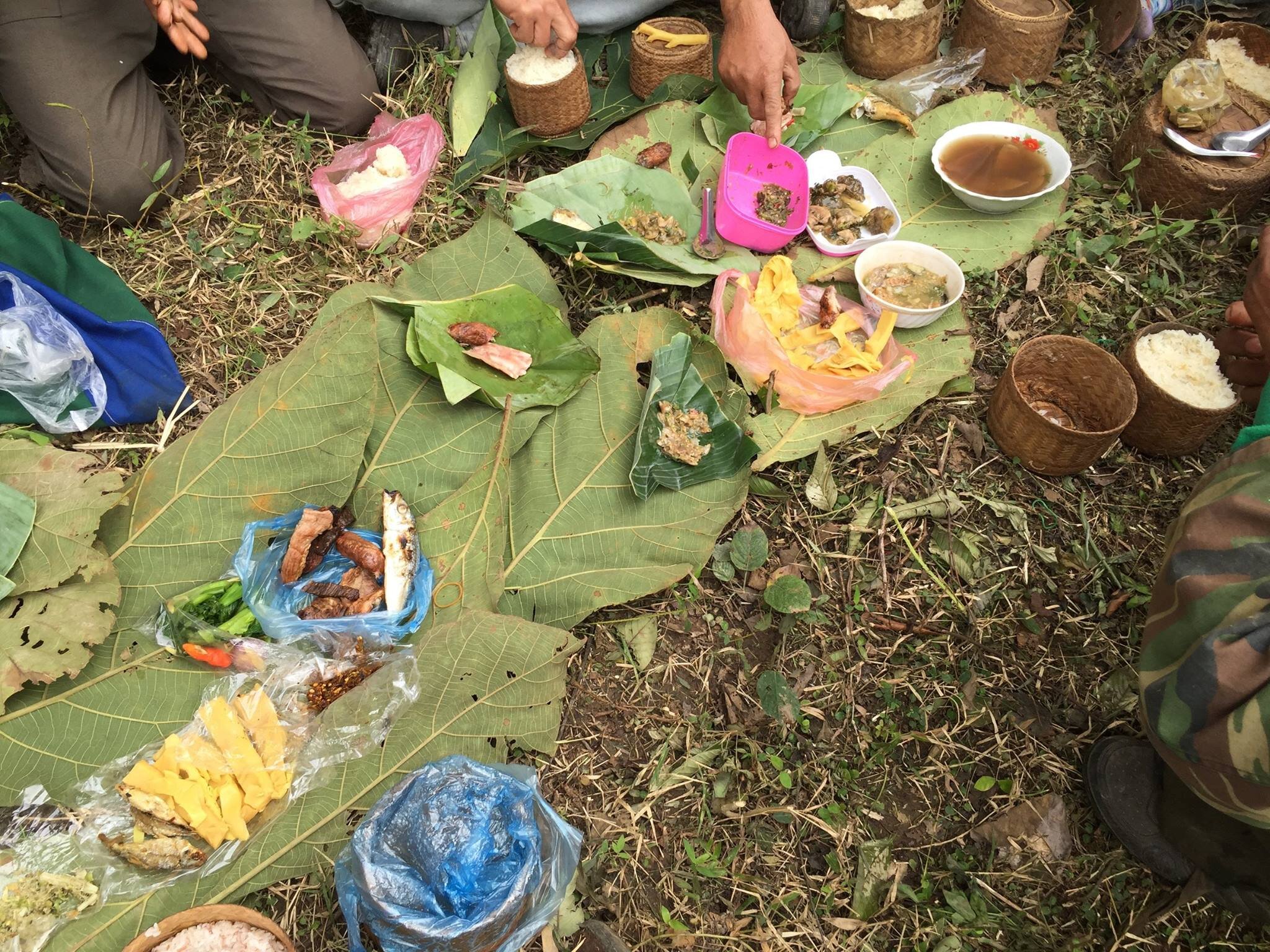
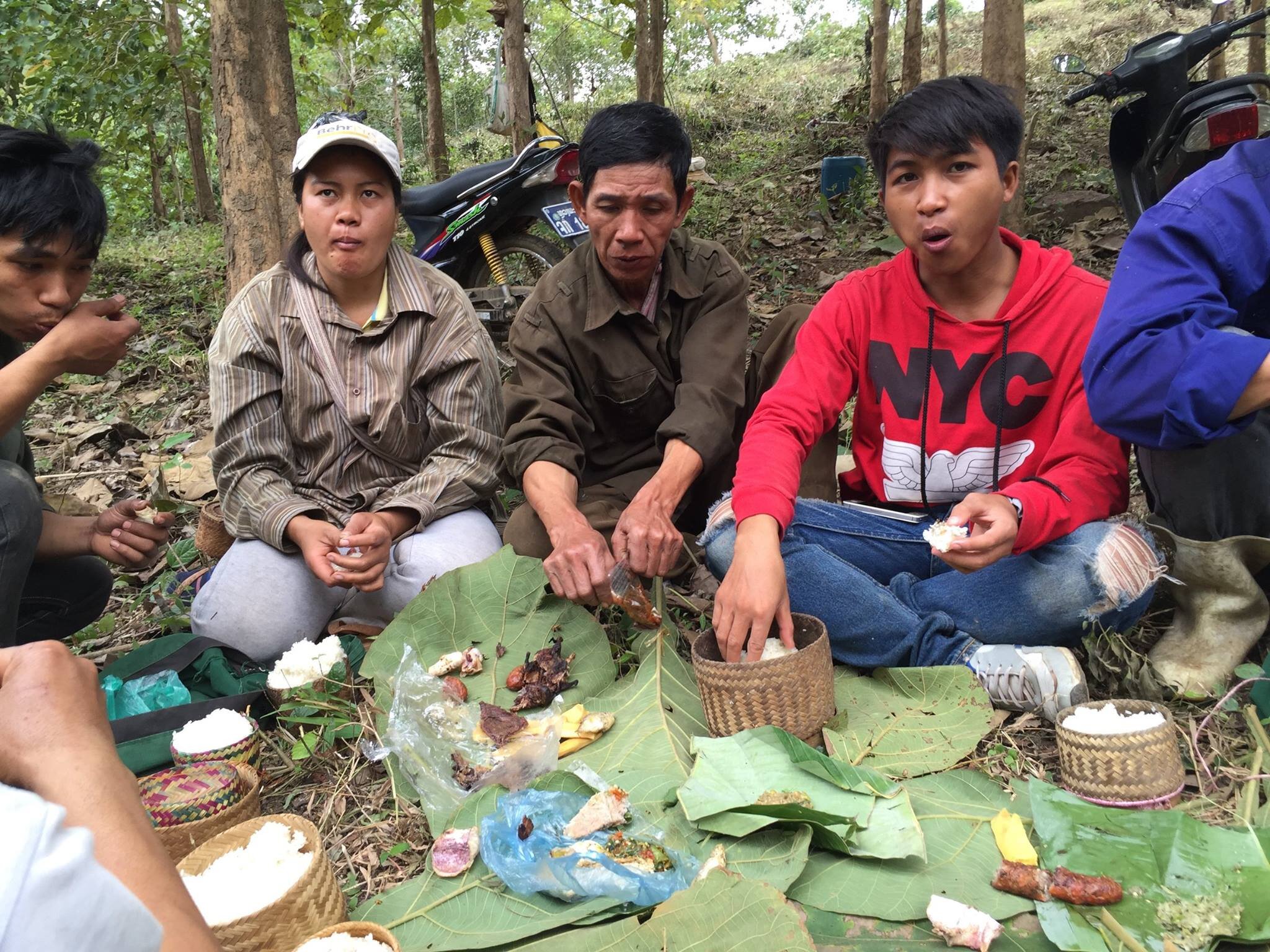
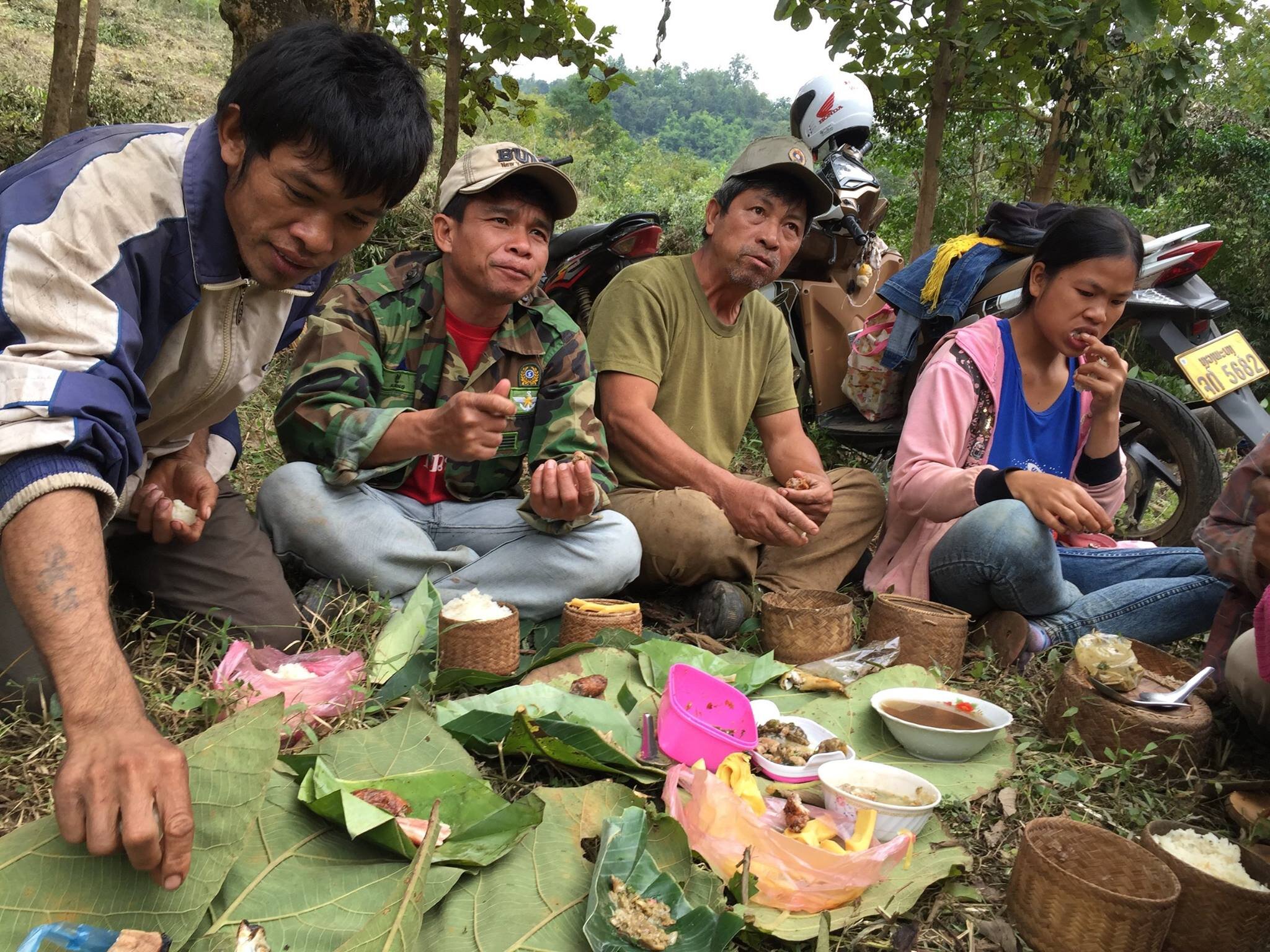
Laying the foundations of the Dairy Farm
To build a dairy we needed land, and so we sent the team out to look for somewhere suitable. They looked and talked with farmers and landholders. We looked at many parcels of land and, finally, after talking with a bunch of farmers in Ban Naxao, we decided that we had found a suitable bunch of connected properties that would work. We rented the land for a two-year period with options to renew, and spent lots of time clearing the land and building fences. We planted grass, as we knew that this was the most critical first step.
However, when we got to the point that we needed to put in a new road to continue building, we ran into a roadblock. Literally. While we had a signed piece of paper from the village chief stating that we could have four-meter-wide road access, it turned out that it was the deputy village chief who signed that and he didn’t have authority to give it to us. That and we would be going through another piece of property that wouldn’t grant us access where the road was easiest for us to build. We tried negotiating, but were constantly told, “No, you only have motorbike access.” “You can buy this one hectare of land for USD $150,000.” “You can move your road over there next to the creek coming down.” None of these were viable options for us, so we decided to stop with the plan for that site and to look elsewhere.
The team went out again to look for new land and came across the parcel of land that we still have now, in Ban Muang Khay. It was flat, check. It was empty, check. It already had electricity, check. It was on the main road with road access, check. It was on the direct route to Kuang Si Waterfall (a major tourist destination) check, check, check! And so, we began negotiations yet again for land rentals and building rights.
It took about six weeks with 40-60 people every day to clear the land of all the trash and black plastic sunk into the ground from the watermelon farm that was on the land years before. Clearance was an arduous task, but a necessary one since there would be living animals that traditionally forage on site, and we needed to make sure it was all gone to keep them healthy and safe.
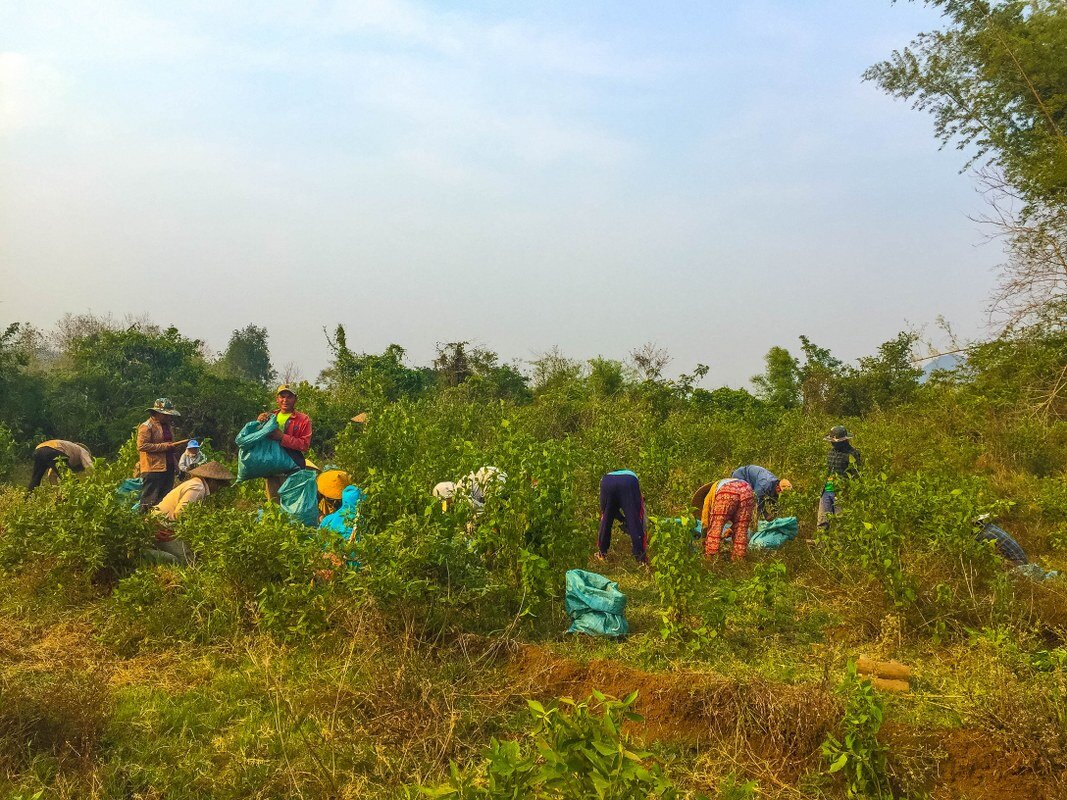
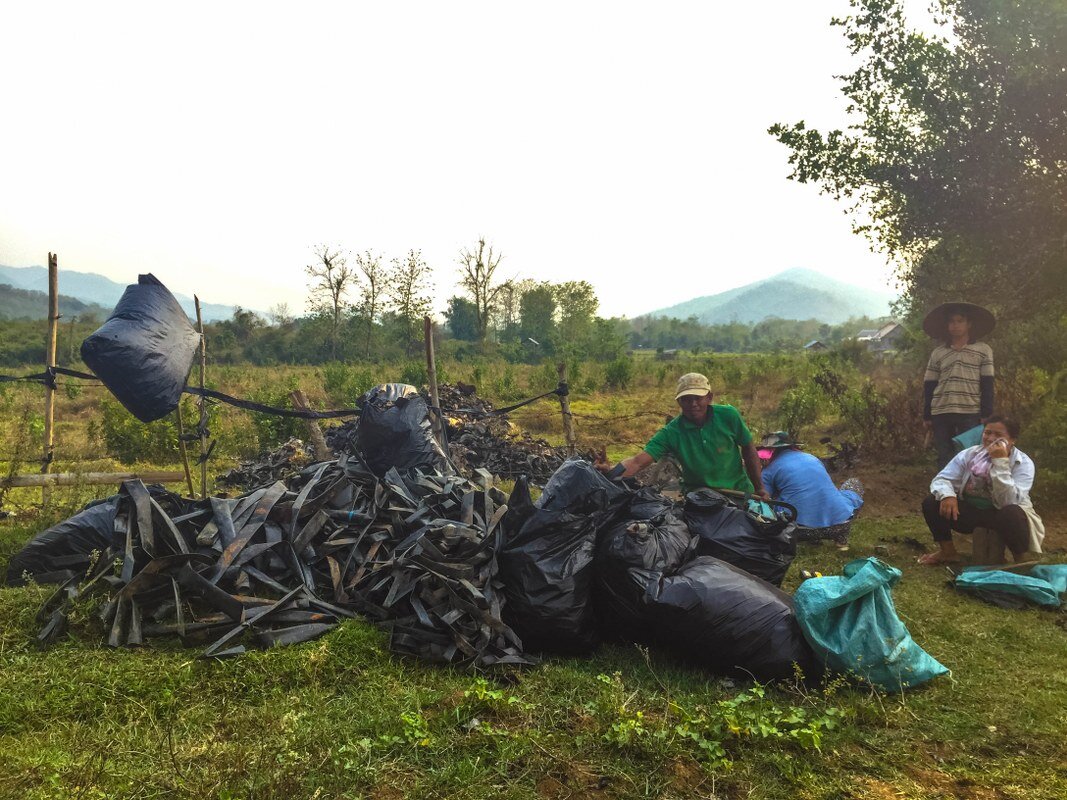
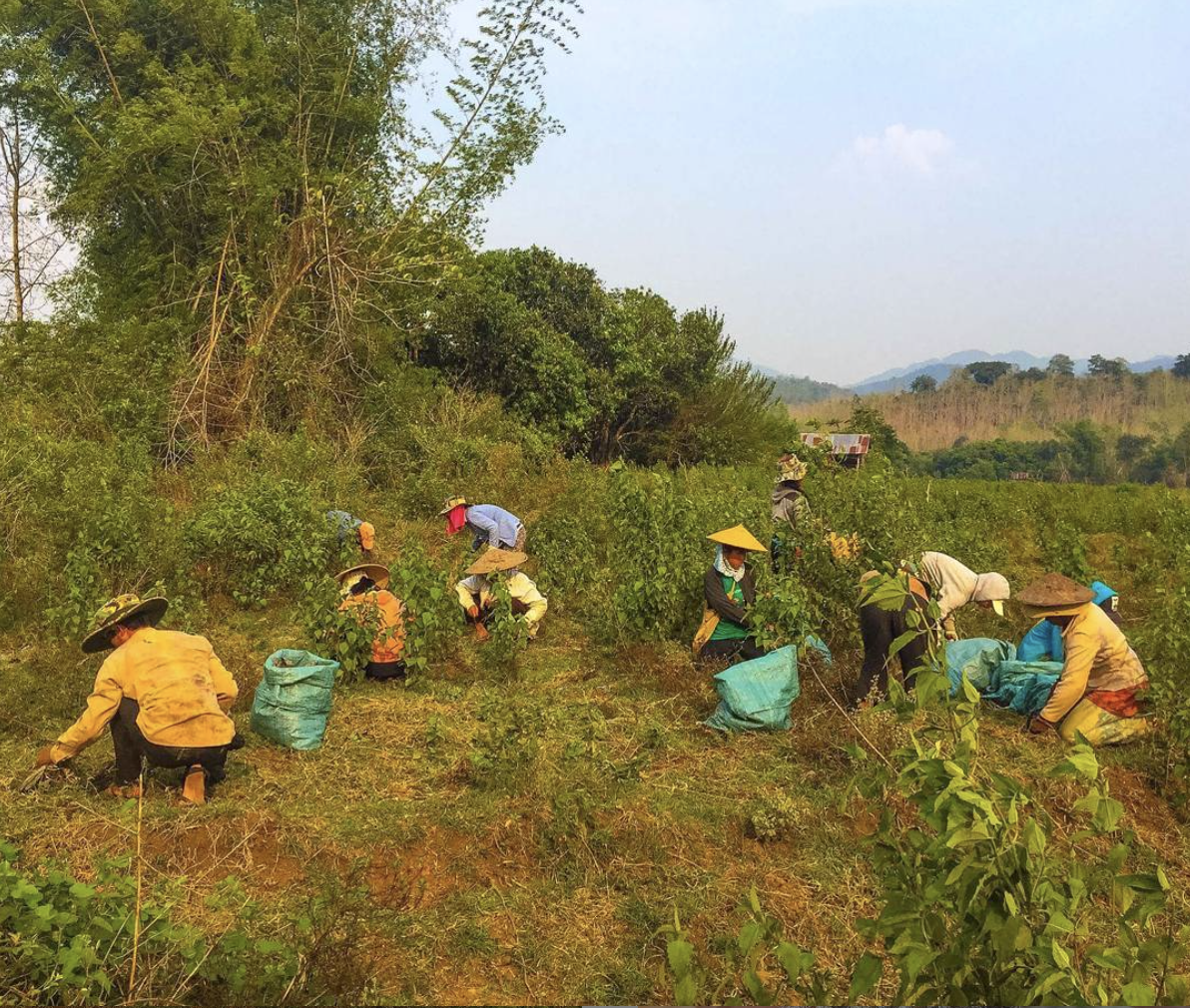
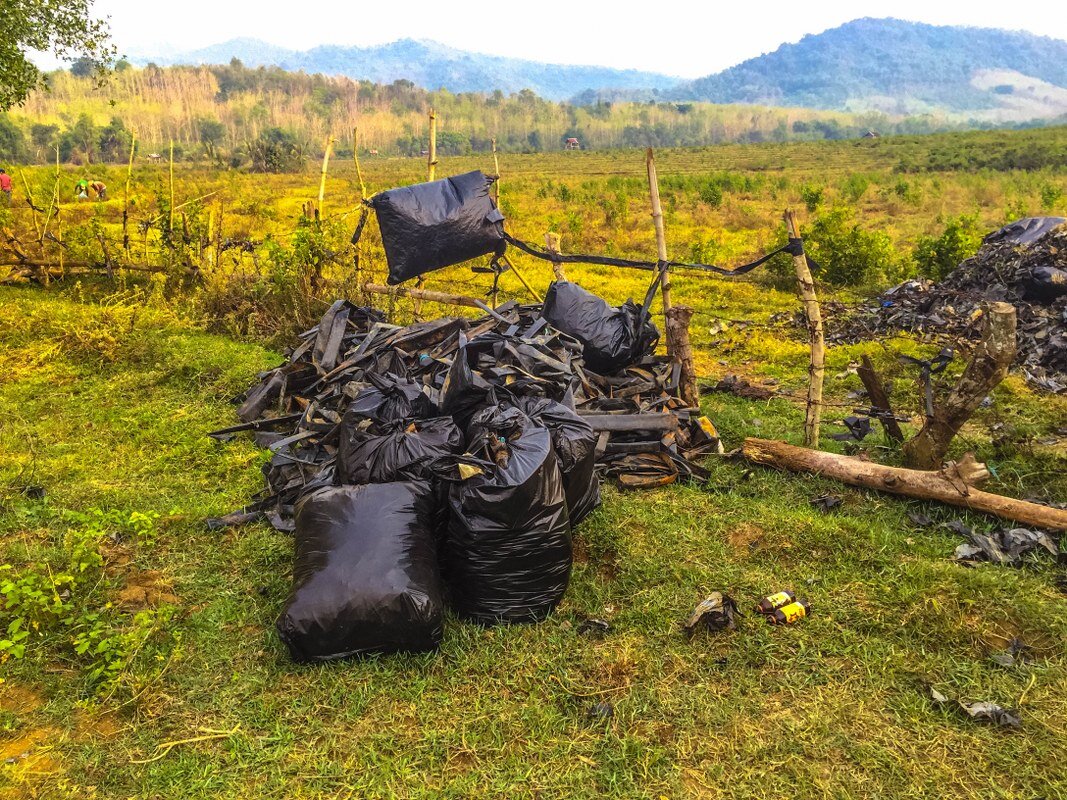
Getting the Farmers onboard
During this time, we prepared and thought about how we could convince the farmers to trust us. We knew that they wouldn’t just give us their “bank accounts”, which is essentially what a buffalo amounts to for a farmer. Farmers keep between three and five buffalo in their “herd”. When they need money to, for example, send a child to school, for a marriage, for a hospital stay, a baci ceremony (a buddhist blessing ceremony), or when someone dies, they sell as many buffalo as they need to pay for whatever it is. But, unfortunately, while the buffalo is their bank account, they don’t make any interest off it. And since they generally cannot afford to pay for vaccinations, there is no guarantee that their “bank account” will provide them with any money since the animal may end up dying of a disease. It’s like a lottery that way.
We decided to hold four informational sessions in one day, spread out over several villages – Kok Mon, Pit Nyai, Ban Jok and Ban Naxao, to talk to the farmers about our idea. Luckily, due to Susie’s persistence with the government, we had Doctor Som, and some other key agricultural officials, on our side to help with these meetings. Dr. Som is a Laos veterinarian who was trained in Cuba many years ago and had an understanding of dairies from his time abroad.
We had our team once again going to villages where there are lots of buffalo, and that are close enough to where the farm would be, to put up fliers about what we wanted to do. While they were in these villages, our team did some preliminary talking with people; asking how many buffalo they had, and would they be interested in coming for an informational session, giving them a brief intro to what we are planning.
We went to these informational meetings with our government allies and had some pretty good turnouts. It appeared more people were interested than not. And they had questions; questions about diseases and the health of buffalo; questions about diets. We answered all of the questions they had. We asked them all to sign an attendance sheet with their phone numbers and planned to have them all visit the farm soon.
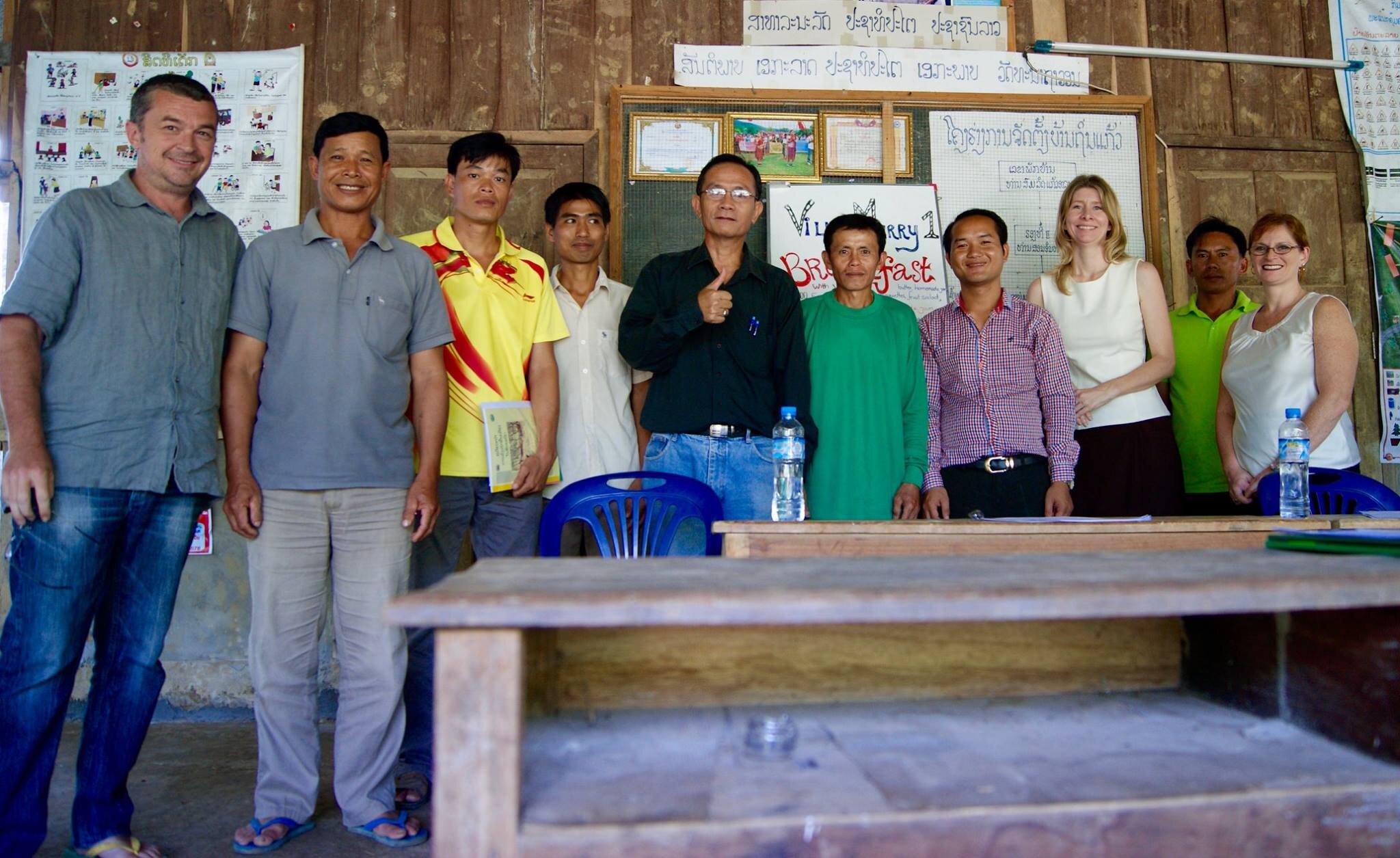
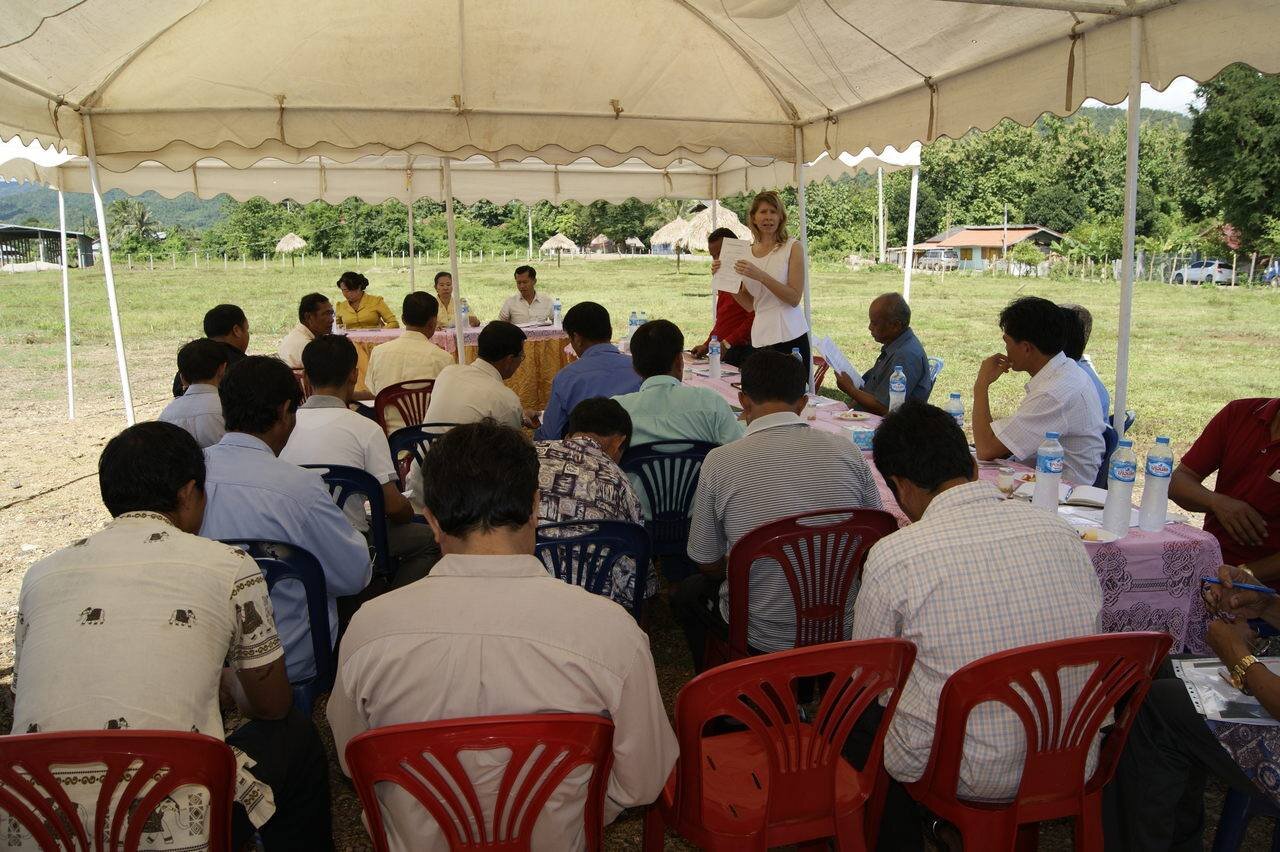
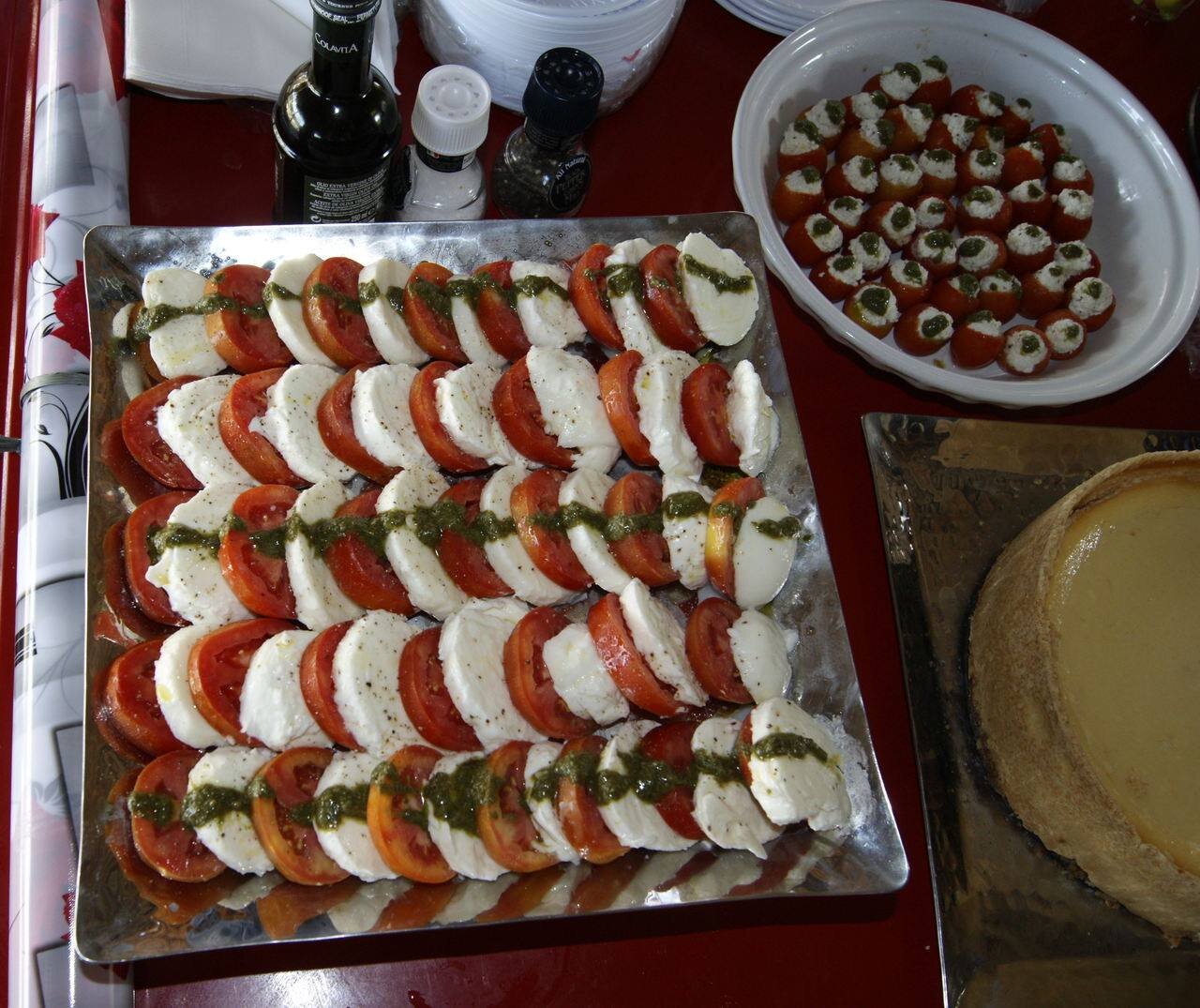
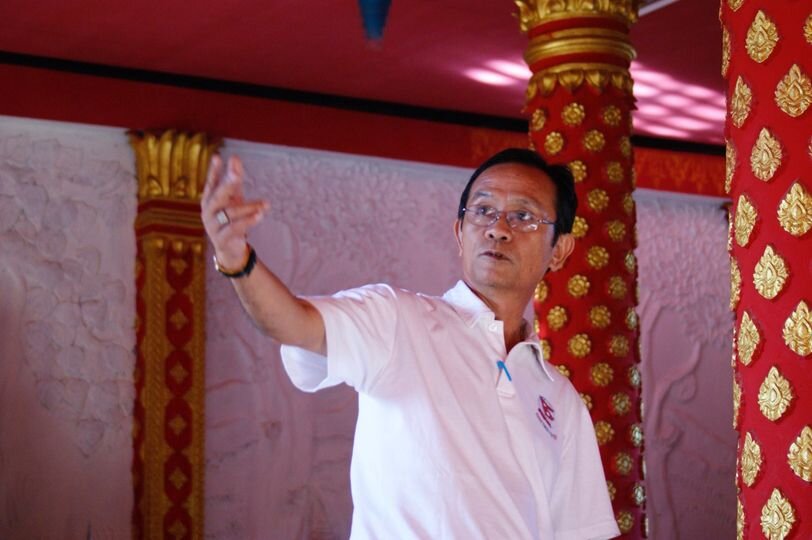
Talking with the Village Chiefs
For the next stage we brought the village chiefs to the farm and showed them what we were doing. We needed to get the village chiefs on our side before the farmers would agree to work with us. So, we set up a meeting, in October 2016, with 17 village chiefs at the farm and explained our new business and what it would mean for the farmers. We prepared yogurt, mozzarella caprese, ricotta stuffed tomatoes and cheesecake for the chiefs so they could taste what we would produce. We had Doctor Som with us, as well as other agriculture government officials, who helped explain and helped show them around. We talked about writing up a contract that is mutually agreed upon that each farmer would have to sign when they bring us their buffalo. Once all of that was set, our next step was to bring the farmers in.
Farmers Visit the Dairy
We arranged with the villages to come to visit the farm one village at a time, and they brought all the farmers who had buffalo. Every time they came we talked with them about what we were doing and how it would benefit them. Remember Mr. Eh and chief Somlit from earlier? Well they were some of the first people to have buffalo on our farm. This helped when the other farmers came. The farmers could see how the buffalo were handled by us and our team. They could see how healthy they were, and how much better the body condition was than the buffalo that were left to roam around unattended.
The farmers liked what we were doing but they were still skeptical about bringing their animals to us. They wanted to see their brother, cousin, or neighbor do it first to see the results. We understood that, it’s a lot to ask for their trust to do something when they have no idea how it will turn out. It’s like telling someone, give me your bank account and I promise I’ll return it in full with interest. Why would you trust that someone would do that? So, we needed to prove to them that it would be worthwhile.
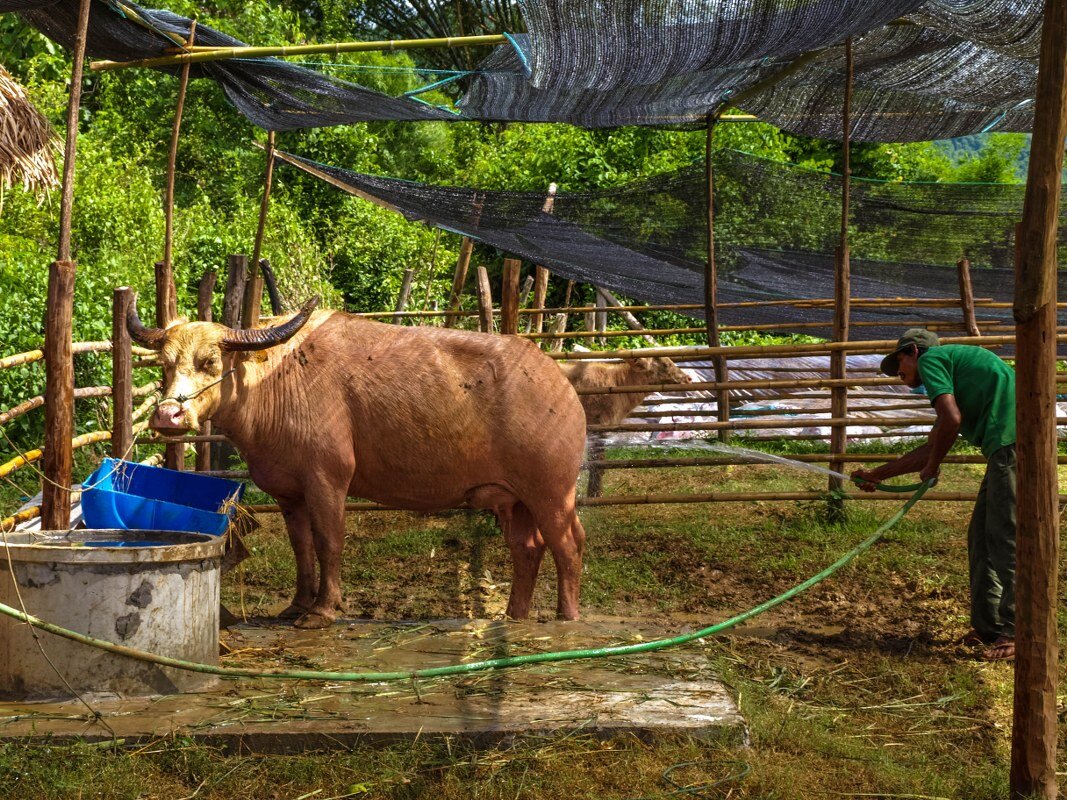
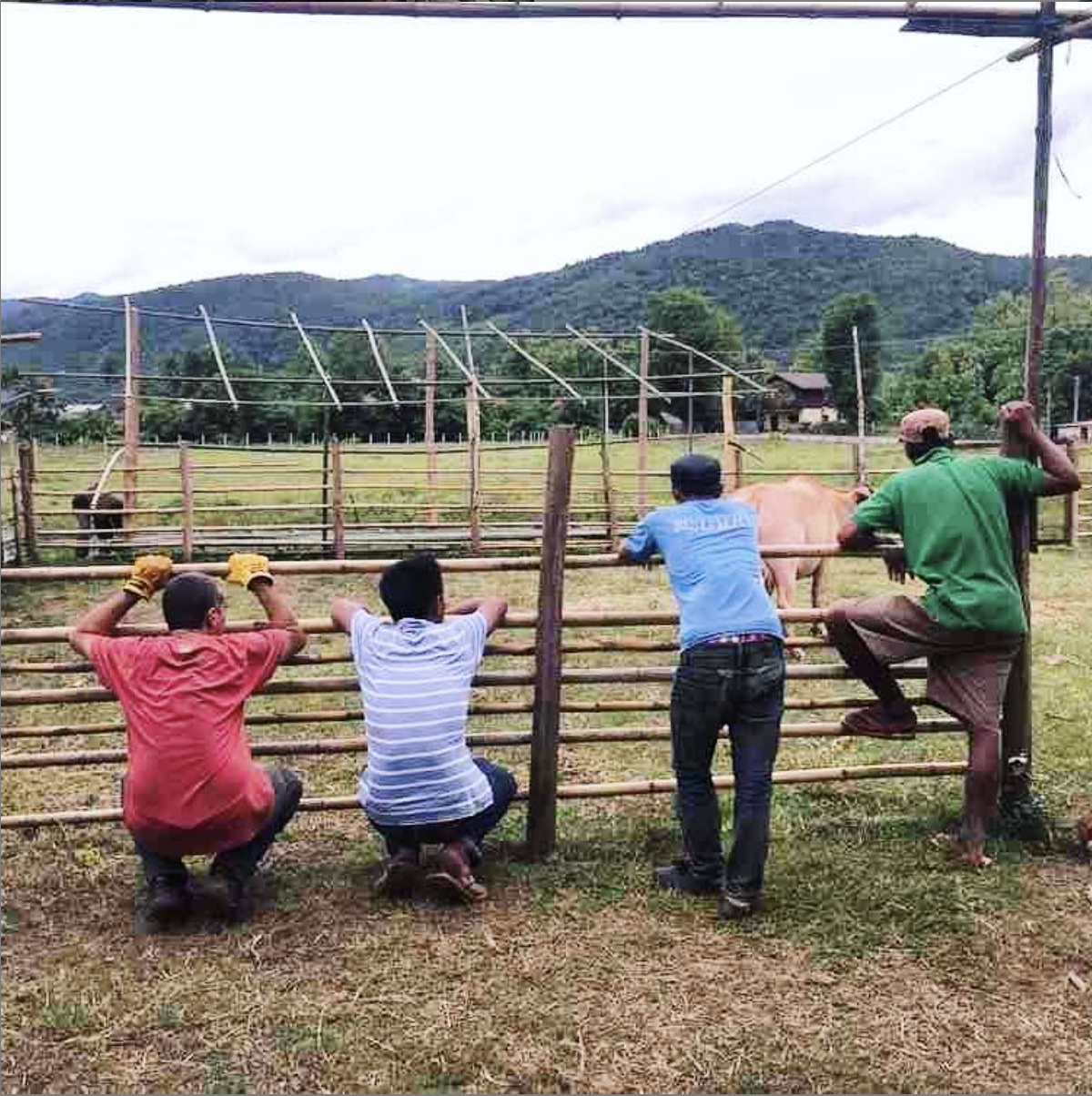
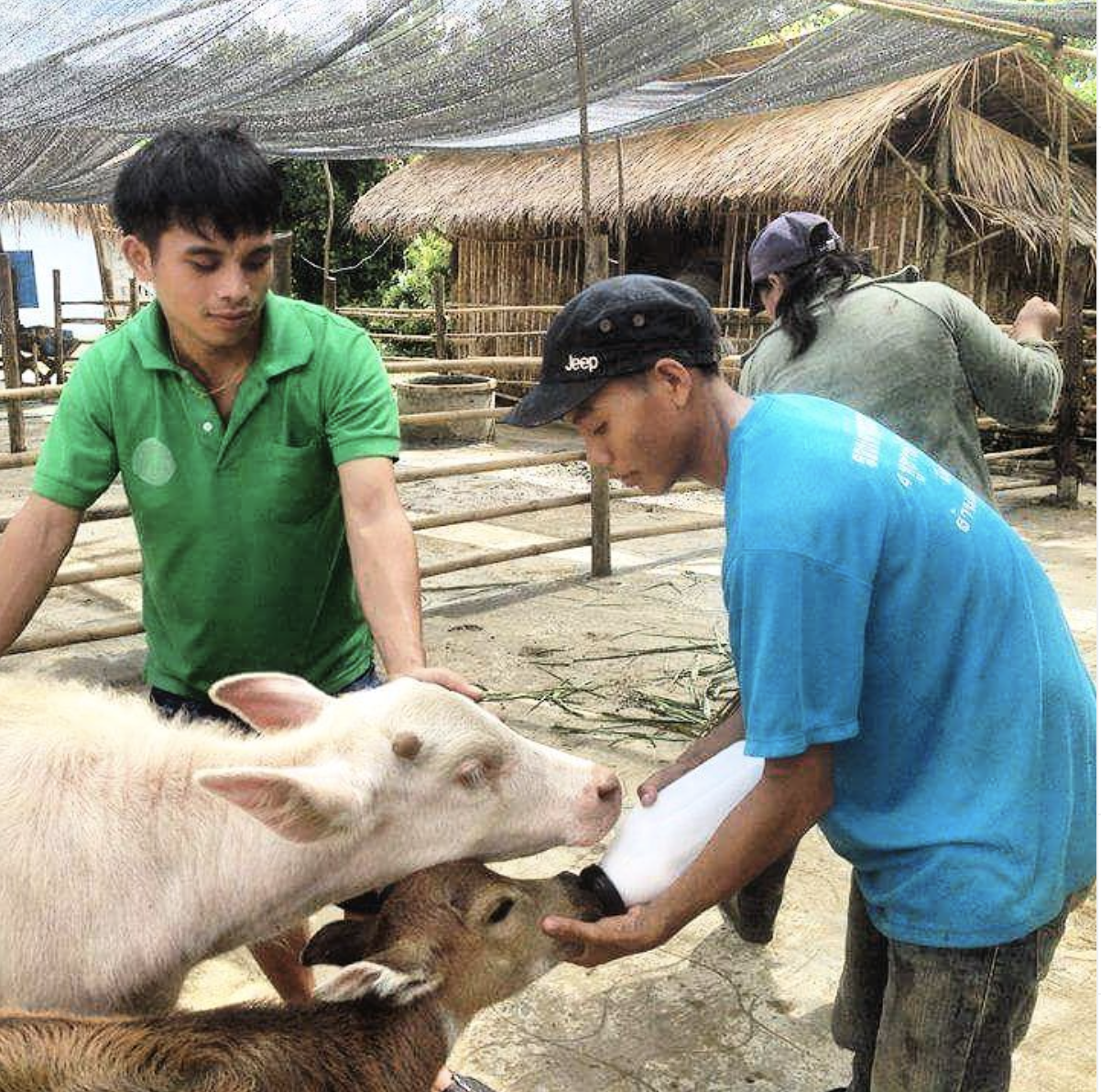
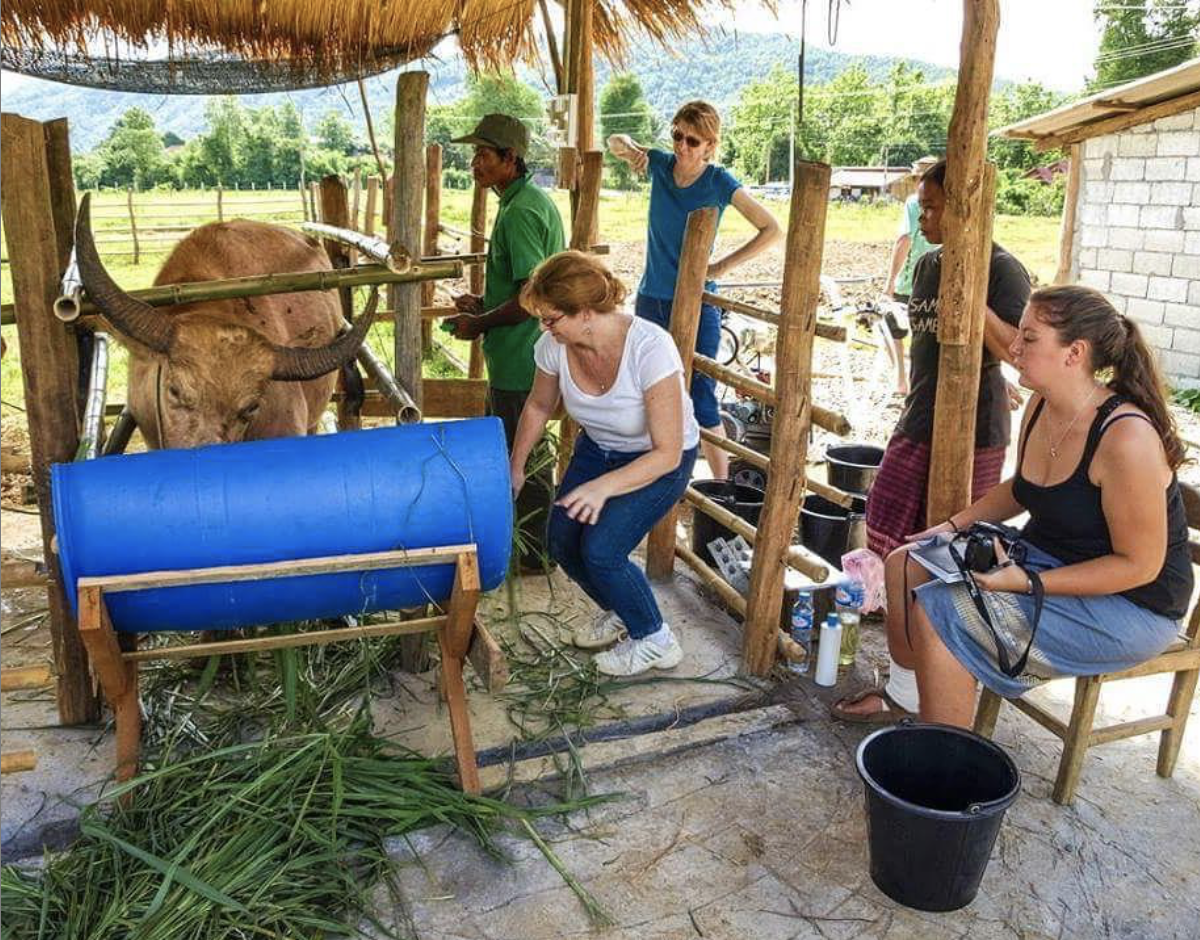
Uli and his Buffalo
A businessman in Laos, by the name of Uli had heard about what we are doing and he thought it was a great idea that would benefit the local people. He offered to buy pregnant buffalo to keep on our farm. That was a very generous offer and we were excited that he believed in what we were doing, but we needed to tell him we were not ready yet. The mini-farm was very rudimentary at this point and couldn't house that many buffalo.
He agreed to wait and we went about our business talking with people, feeding the few buffalo we already had, training a team, and just generally going about the day, trying to make things work. Then about two months later, we got a phone call from Uli – he had found a trader and bought nine pregnant buffalo and they should be arriving soon. That’s fantastic, but we still weren’t ready for them! This of course posed a problem as Uli didn’t have any land to keep the buffalo on. So, after some back and forth phone calls, he finally found a friend who was willing to take them for a temporary time until we could transfer them to the farm. This made us move faster. We needed to finish the mini-farm to take them.
But, we decided some other things needed to happen before the buffalo came to us. Like knowing if they were pregnant and how far pregnant they were. After an initial assessment, it turned out that of the nine buffalo he bought that were supposed to be pregnant, only four actually were. Uli sold the five buffalo who weren’t pregnant and we brought the other four to the farm to wait. One of these buffalo was to become our star, Lola! Thanks to Uli, we had some more buffalo to give us milk, but still not enough.
In the end, the reticence of the farmers to become involved caused us to do something drastic. In September 2017, we were still only getting about six liters of milk a day, as we only had a few buffalo on the farm. If we wanted to succeed, we needed more milk so we could make products to sell. We went to our friends at the Mini Murrah Farm just outside of Bangkok, Thailand and we arranged to buy 12 pregnant Murrah buffalo from them. On 26 September 2017, our pregnant ladies arrived on the farm. It was quite a to-do to get them off the truck too. You could tell the team was a little hesitant with these big beasts – they are much bigger than the local swamp buffalo. We tried telling them in Lao to move off the truck and then in English, but it wasn’t until a team member spoke to them in Thai that they actually moved. A good laugh was had by all, and our pregnant buffalo moved into quarantine for their first month with us. And now we had to wait for the calves to be born...
The Murrah heading to quarantine just after getting off the truck.
In our next blog, find out how our buffalo breeding program developed and meet the cute buffalo calves...
HAVE YOU SEEN OUR SOCIAL MEDIA THIS WEEK?
If not, pop on over to facebook/laosbuffalodairy or instagram/laosbuffalodairy to see what we have been up to!
TOURISM IN NEED
COVID-19 has badly affected tourism and visits to the farm. In order to mitigate some of the effects of the loss of income this has meant for the dairy, we have teamed up with the Tourism in Need initiative that supports responsible tourism organizations affected by the pandemic. Through this initiative, travelers can support the dairy through the Give Today, Go Tomorrow fundraising scheme. Click here to find out more and to make a contribution to help us to pay farmers and team members, and continue to train farmers and work on our nutrition program.
The Laos Buffalo Dairy Story: Part 1 - From Singapore to Mozzarella
In this week’s blog post chef Rachel shares our story as we tell it on the farm tour. We realise that while some people know about us, they don’t really know how we got here. Well, here goes!
In this week’s blog post chef Rachel shares our story as we tell it on the farm tour. We realise that while some people know about us, they don’t really know how we got here. Well, here goes!
Callie, Josh, Brie and Sarah on holiday in Borneo.
In 2013 our two families had a collective mid-life crisis. Susie quit her job, and a few months later, Matt quit his job. It was Halloween night in Singapore when Matt called me to say he had quit and was going to get a beer before coming home. At the time, I was walking down 42 flights of stairs with the kids and trick-or-treating. Talk about a time to have a mid-life crisis and a bit of a freak-out!
When I arrived home and told Susie what had happened, I asked her what we were going to do now, because I knew I certainly wasn’t ready to go home (meaning back to America). Susie suggested we go build a hotel somewhere and I agreed and thought we should go to Laos. Now, you might ask why a hotel and what could we possibly know about building one?? Well, Susie was regional GM of serviced offices with a head for numbers, marketing and staffing; Steven was an electrician and a construction manager in his old life; I was a chef and Matt was in finance. All four of us made a great team to start a project like this.
The next day we broke the news to Steven and Matt and told them our idea, and not even two weeks later, Susie and I were on a plane to go have a look-see at Luang Prabang. We had been to Luang Prabang to visit as tourists, but now we decided to go have a look to see if we might be able to go and move there for any opportunities and have a life there with our families.
Our buffalo curd & treacle breakfast in Sri Lanka.
While visiting, Susie and I decided to spend more money on food-related things than accommodation. One of the things we decided to do was to take the cooking class with Amantaka, a luxury hotel, and which included a field trip through the morning market with the chef. While walking through the market, we asked the chef where the buffalo curd was. Having been to Sri Lanka, and having had the curd every morning for breakfast while there, we naturally assumed that we would find it in Laos as well, considering how many buffalo walked around. He looked at us like we had three heads and asked, the what? When we explained it was a rich, creamy, thick yogurt made from buffalo milk and since there were so many buffalo, we thought they would milk them and make it. The chef stopped dead in the middle of the market and gave us a wide-eyed stare, while asking, “You can milk buffalo??”
Susie and I looked at each other and said, “Oh, we can do this!” And so, an idea was born.
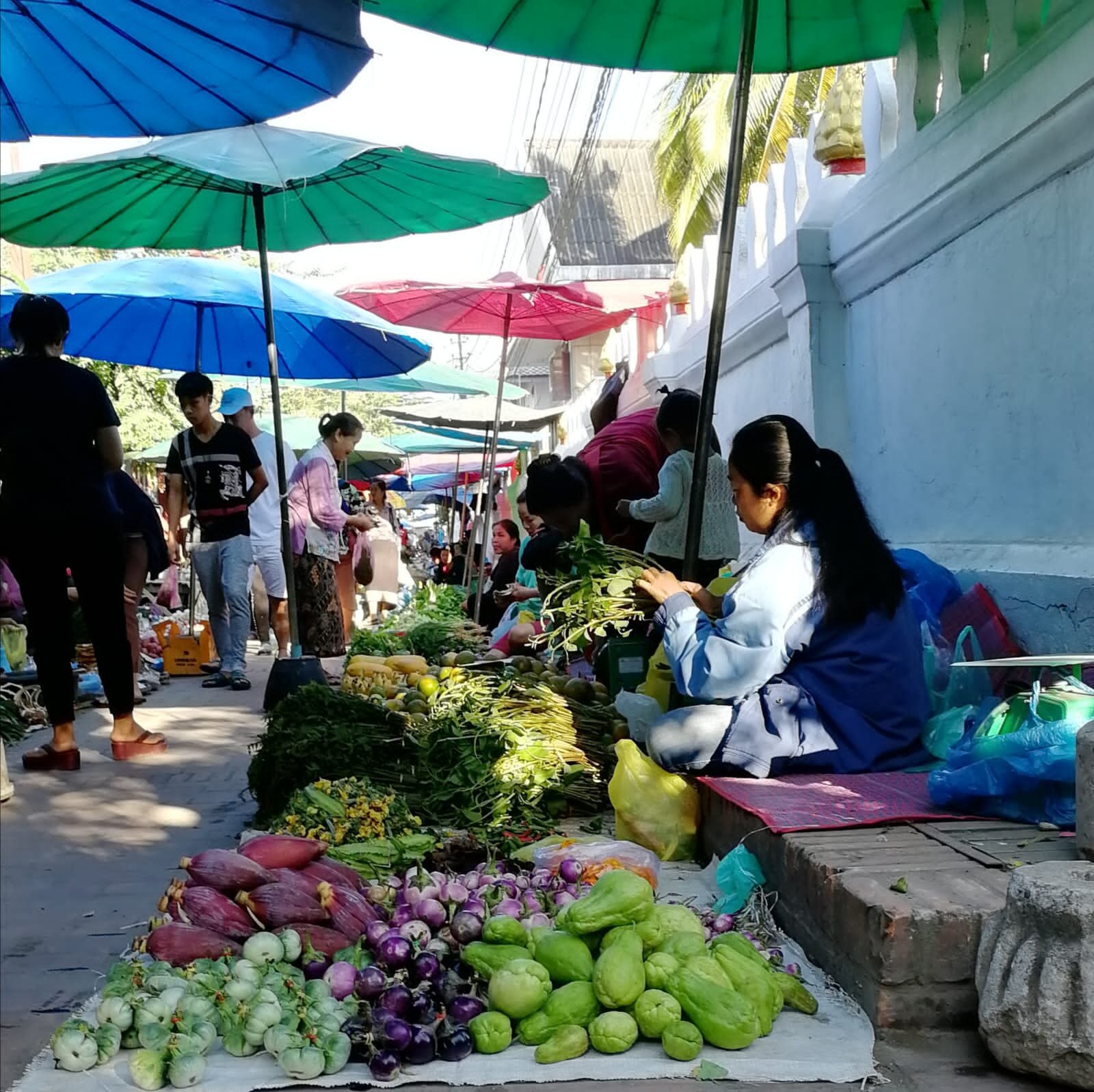
In January, the boys came back to spend ten days here. While here, Steven and Matt managed to find a guesthouse we could rent so that we could be hands-on on the ground and see how things worked. In August of 2014, Steven and Matt and the kids moved to Laos first to find houses, start running the guesthouse – Merry 1 - and get the kids settled before the school year started. In September, Susie and Rachel followed. Two days after Rachel moved to Laos, Matt moved to Hong Kong to start a new job.
When we first arrived, we had made a list of things that we thought the city could use – a real estate agency, large hotel, dairy, and some other ideas as well. Within the first few weeks we had a conversation with a friend about some of these ideas, but said that we thought the hotel should come first. The idea was always to design an eco-hotel, get the land and the licenses and then sell to the highest bidder, sit back, relax and play with the other ideas.
What a great idea! Only, it wasn’t to be that way. Two months after our arrival, our friend called us and said he had a farmer who was willing to work with us on milking buffalo. Oooooohhhhhkkkkaaaayyyyy….. so I guess that means we’re switching lanes.
Off we went to meet with this farmer and started to chat with him. We had to explain where milk came from, as it turns out that since there is no dairy culture here in Laos, most people thought that milk either came from a box (the UHT milk they are familiar with drinking) or from fruit – like coconut. We had discussions about how you could milk buffalo, just like you milk cows and showed him videos of people in India milking buffalo.
During the month and a half that we had discussions with him, we had a guest staying with us at Merry 1 that turned out to be more helpful than just a guest staying with us! One morning when she walked into reception, I looked at her and had a funny thought. I said to Maria, “Do you, by any chance, have any dairy knowledge?” Maria gave me a very shocked look and said, “Actually, yes, I do! I worked on a dairy farm for ten years, and I’ve been in dairy finance for 15!” I was so excited, I blurted out, “You’re my new best friend!”
Maria sat down at the desk with me, and I explained that we had an idea to start a buffalo dairy farm. We had a farmer that we were beginning to work with, and we needed help writing out directions on how to milk buffalo. She told me that she had never milked a buffalo, but she had milked cows and it couldn’t be all that different. After some discussion on how to do it, she promised that she would write up instructions in a step by step list for us, that we could then go and get translated into Lao. She was also interested in meeting the buffalo, as one of the things that she warned us about, was that if the buffalo were anything like cows, they weren’t very friendly with strangers and what we wanted to do might be very difficult.
With the translation done, we called the farmer again to go and see him and do some more explaining. This time he asked if we wanted to meet the buffalo. And of course, we said yes! We asked Maria if she would be interested in coming along since she was our milking specialist at this point and could be there to help answer any other questions the farmer might have as well. She was excited to come with us and meet the buffalo to gain a better idea of whether what we wanted to do would even work.
When we arrived, the farmer walked us into a little field he had nearby where he and his neighbor kept their buffalo. He told us that he had one tied to a tree as this one was kind of testy and didn’t like anyone, so he wanted to make sure we were all safe. Let me tell you it was a bit intimidating walking into that field with those big animals, having never been up close and personal with a buffalo before!
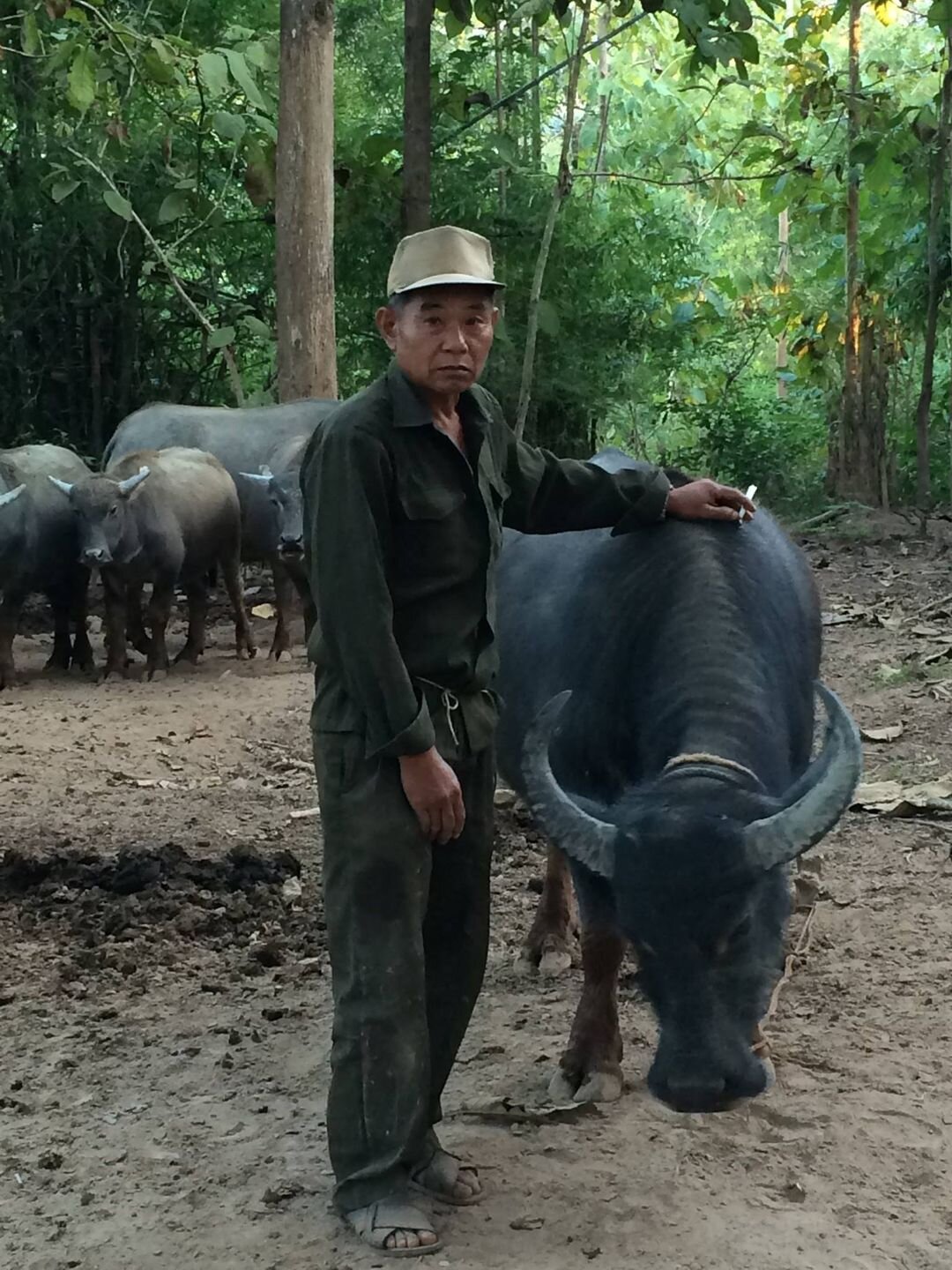


As soon as we entered, the farmer walked right up to one and started to scratch it on the butt. Its tail raised immediately, which we soon learned was a sign that it was enjoying what the farmer was doing. Before long, surrounded by curious buffalo, I was getting a bath by buffalo tongues! When the farmer noticed this, he asked if I wanted to stay with the buffalo as it was clear they liked me. Thank you, but no thank you. ☺ Maria was surprised at the curiosity and calm nature of the buffalo and decided that we wouldn’t have a problem at all if most buffalo were like this.
At the end of the day, we were happy and thought we could start a successful trial….. Until…. We received a phone call from the farmer, and he asked if the baby still needed to be drinking milk from the mother for this all to work. When we answered that yes, that was key to the trial, he told us that that had stopped a month ago. We thanked him and said we would see him next time around when the babies are born.
Being stalked by a buffalo…..but isn’t she cute???
At this point, we decided that we had invested quite a bit of time into what we were trying to achieve and that it was worth sending our team members out on a search to find another farmer who might be interested in working with us. It took about six more months, but finally, we came across Somlit, the village chief in Ban Thinkeo. Somlit is an outside the box kind of guy, and we love him! We spoke with him a few times and explained what it was that we wanted to do. We sat with him and some of his villagers to describe the milking and why it would be good. After some discussions, Somlit told us he would find us a farmer with who we could work.
Finally, we sat down with Mr. Eh, one of the villagers, who had three buffalo with calves that ranged in age from 2.5 – 4.5 months. We talked about the 6-week trial we’d like to do. We explained that we would need to build a fence with a separate pen for the calves and that while they were penned and separated, he would need to feed and water them. This approach was a big deal as in Laos, farmers generally cannot afford to feed, vaccinate, or pen in their animals, so they allow them to roam free looking for food and often wandering in areas where there may be diseases that could harm them.
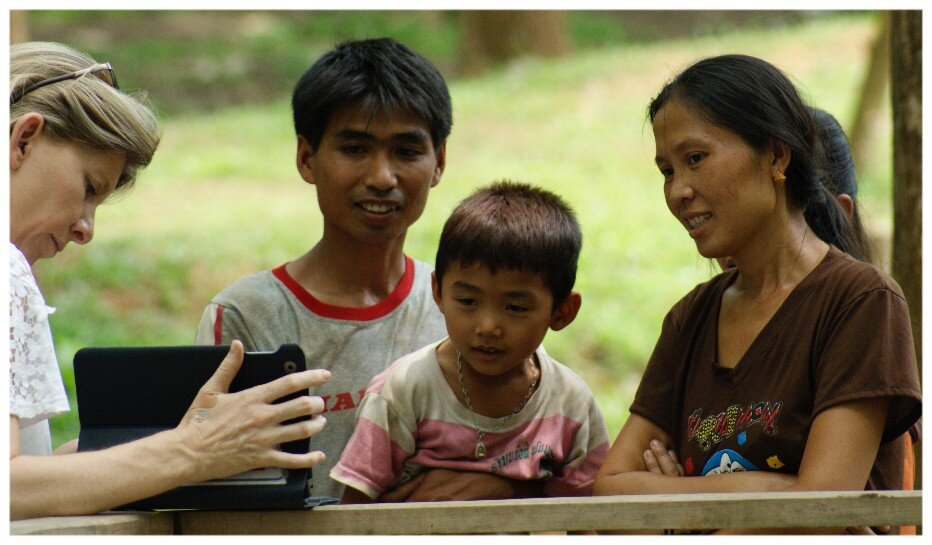

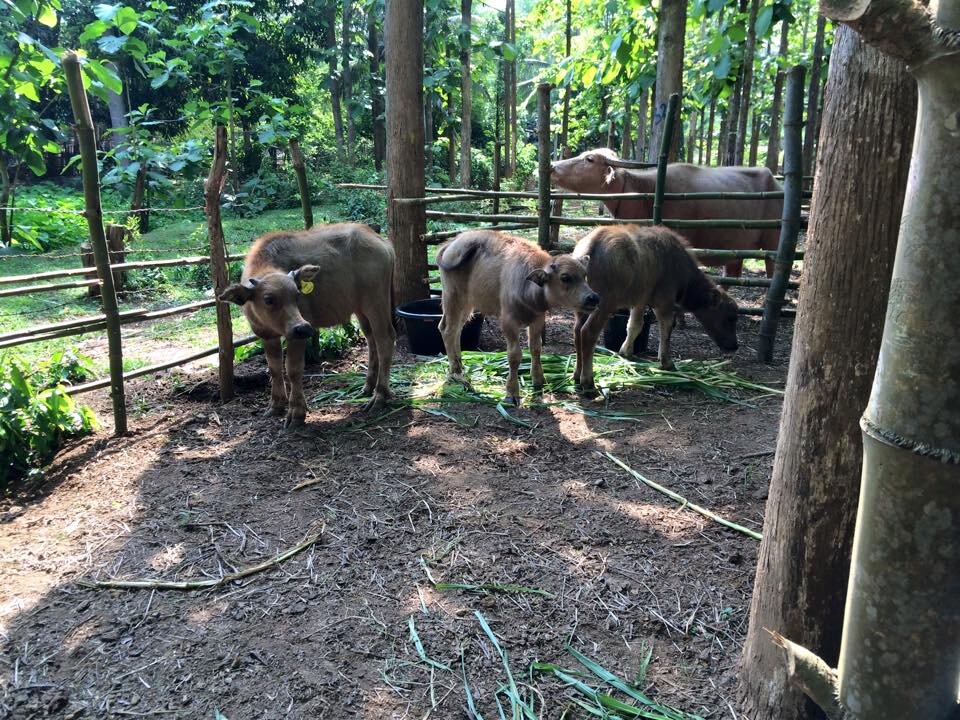
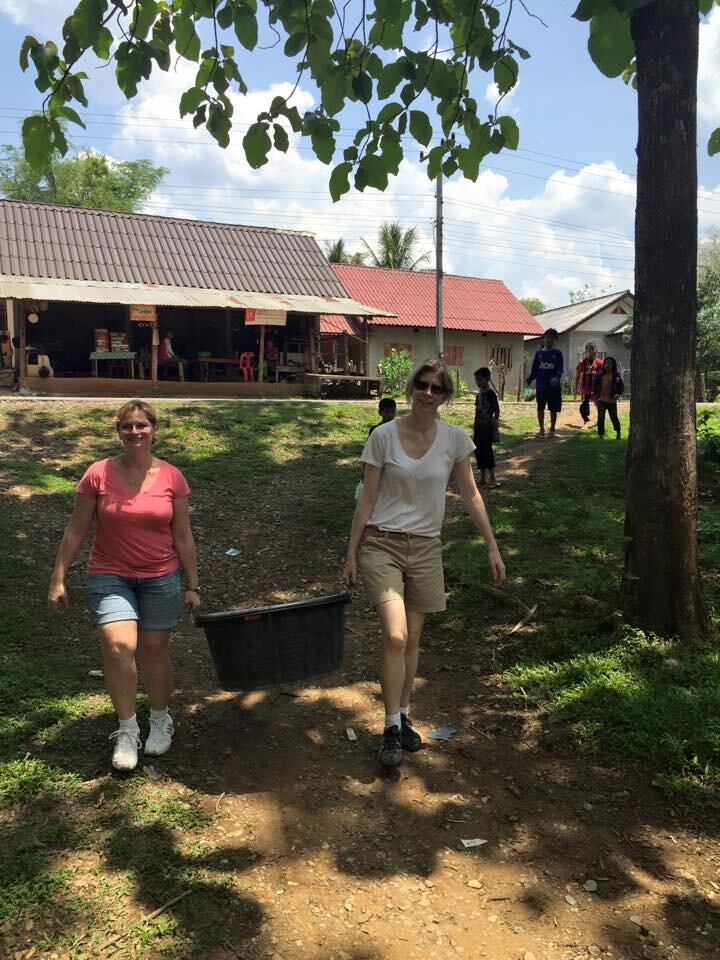
We looked at an area he had under some teak trees where he already had a pen of sorts built and then discussed how it would need to be changed a bit and reinforced. And add in a crush that we will be able to get the buffalo into securely so we can milk her. We explained that she would be more amenable to milking if we fed her at the same time and we would need to build a little trough as well. We bought the supplies to do it all and like Captain Picard, on Star Trek instructed, “Make it so!”
Once the buffalo were penned and separated, we started to milk or at least tried to milk them. It took a bit of time for them to get used to what we are doing and produce any milk. Having never been handled like this, we needed to teach Mr. Eh and his wife how to do it, since it was their buffalo and they were more accustomed to being handled by them. We were very excited when it worked. We had already talked with Mr. Eh about how the milk needed to be kept cold after milking until we could pick it up. And this posed a problem in the beginning as most people in Laos still do not have refrigeration in their homes, but they do have big coolers that they fill with ice. We supplied him with containers to milk into and store the milk – a separate one for each buffalo so we could keep track of how much milk they gave.
Steven as the “Caped Cheese Crusader” flying by to go get milk.
Steven drove out to Thinkeo every day to collect the milk and bring it home to me. Every 3 to 4 days, I had enough milk with which to experiment. And every 3 to 4 days, I tried to make cheese and cried. Why did I cry? Well, it was impossible to find cheese recipes online for making buffalo milk cheeses. There were very few people out there who made buffalo milk cheese and those who did, did not usually share their recipes. So, having never made cheese before, I was using a cow’s milk recipe to try and make it work for buffalo milk and adjusting after each new batch to try for a successful trial. Only, the composition of cow’s milk and buffalo milk are very different and do not react the same way with the ingredients, hence the tears.
I finally decided after days (more like weeks!) of crying and failing, that I needed help! I looked online and found all of the dairies worldwide who made buffalo milk mozzarella and emailed them all with my plight. Of the 15 dairies that I emailed, only one replied. And that was Thea from Shaw River Dairy in Australia who emailed and offered help. In her email, she told me that she could give me her recipe but that it won’t work, which of course stops me right there and I burst into tears yet again! But as I read on, she explained that the differences in fat in the milk plays with the ingredients, and I would have to adjust accordingly. I had an “aha!” moment and realised that I could work with this. So, I compared the recipes, with where I had started, where I have gotten to and with what Thea gave me, and I tried her recipe first. She was right, it didn’t work, but it did get me a lot closer. With a bit more adjusting, I finally perfect a mozzarella ball, just as we finish our 6-week trial. But, at least now we know that we can get milk from the local swamp buffalo and that I can successfully make mozzarella!
Next time...Building Laos' first ever dairy in Luang Prabang!
Here at Laos Buffalo Dairy, we are proud to be recognised at the prestigious WTM World Responsible Tourism Award in the Neighbours and Employees category. The awards this year were a little different as the judges decided to commend businesses and destinations which are taking responsibility and addressing the many challenges of Covid-19.
We won the award for the work we are doing to support the local Laos communities in and around Luang Prabang by setting up the first Buffalo Dairy in the country. The dairy is a popular and growing tourism attraction, and when Covid-19 hit all the income from tourists went away. Instead of shutting up shop, we re-imagined how we could continue to support our staff and the local communities.
Below is what we have been doing to keep local people employed and how we have been using our facilities to help our neighbours cope with Covid-19.
Staff
The dairy continues to employ all its regular staff, all of whom come from the local villages and, although payments have been reduced, all staff still make over the minimum wage. Also, free housing has remained available to any staff if needed. Free English classes for staff continue, meaning the chance to upskill for when Covid-19 is over. For any of the team with children, there is free buffalo milk to improve family nutrition.
Community
In the wider community, we have continued with the nutrition programme we have been implementing. The programme involves pilot projects in four local villages to research the best ways to increase nutrition, and implement improvements with resources already available to villagers. Issues with nutritional concerns will not go away with Covid-19, so continuing to work out the best practice in this area will allow us to roll out the programme on schedule, after reviewing the pilot stage.
Also, as part of the nutrition programme, we continue to expand and diversify from being solely a buffalo farm. During Covid-19 the first two cows arrived at the farm, and recently we acquired our first goats as part of our project to create a goat haven. All of these actions continue to help support the local rural village communities in a time of need.
Instead of cutting back training, the dairy is also continuing a farmer training programme to help the local villages.
Initially, we supported 17 villages and increased this to 20+ communities, all of which continue to receive support during Covid-19.
Free English classes take place on-site, and between 30-50 local children attend these elementary classes. Besides this, during the school holidays, the dairy teamed up with other responsible tourism organisations (Traditional Arts and Ethnology Centre, MandaLao Elephants and Free the Bears) to create a week-long English Language Summer School programme. The scheme allowed around 30 children from the local villages to attend English lessons, and visit these local tourist attractions.
The dairy has built a children’s play area that the local children can come and use every day (Monday-Friday). Up to 20 children use this facility each day.
To increase domestic tourism, we refocused on the local market, and for 50,000 Laos Kip ($6) we offer a tour of the buffalo farm. The money paid can also be used against any purchases in the cafe and is sufficient to cover three scoops of ice cream per person.
All of these programmes could have stopped due to Covid-19. However, it is a sign of the spirit, determination and commitment to our vision that we found a way to continue helping the local communities and loyal staff.
Coming soon!!!
The Little Book Co
We've got exciting news! We've been invited to have a page in a new coffee table book featuring inspiring stories of female business owners and change makers!
The book is going through pre production now and should be available by mid November. Keep your eyes on our next newsletter for more information!
HAVE YOU SEEN OUR SOCIAL MEDIA THIS WEEK?
If not, pop on over to facebook/laosbuffalodairy or instagram/laosbuffalodairy to see what we have been up to!

















